- Your School Type
- Solutions
- Resources
- Blog
- Events
- More
- Contact Us
- Book a Demo
- Get a Quote
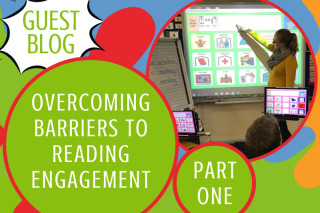
We are excited to share the first of 2 blog posts by Stefanie Young from Glenallen school.
In this blog post she shares about the unique challenges she faces as a Literacy Learning Specialist at a special needs school, the barriers to reading engagement that she is working to overcome and how she has empowered students with specific challenges to search for and choose books independently.
In part 2 she will share how she has overcome the challenge for students to read books independently, and provide them access to popular, age equivalent titles which were previously unavailable to them.
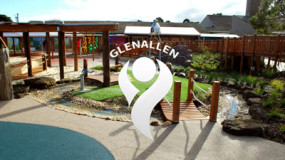
Glenallen School is a specialist school that provides individual learning programs for 176 students aged 5 - 18, who have a physical disability and/or significant health impairment requiring paramedical support.
The school caters for students with a wide range of intellectual abilities. We have students from level A of the curriculum through to level 8.
78% of our students use augmentative and alternative communication (AAC).
We are committed to providing a secure and stimulating learning environment where children and young people feel safe, and their rights are considered when decisions are made that affect their lives.
We believe that students can reach their full educational potential only when they are happy, healthy and safe, and when there is a positive school culture to engage and support them in their learning.
I have seven students in my class, aged 6-8. The students are currently working at levels C through to early Foundation of the English curriculum.
All of my students are in wheelchairs and have no independent mobility. They are all non-verbal and use augmentative and alternative communication such as a PODD communication book or a communication device. They all require assistive technology to enable them to use a computer or tablet.
However, despite all of these challenges, every student is learning to read!
The Simple View of Reading tells us that reading boils down to two main components, language comprehension and word recognition.
Word recognition includes all the wonderful things we do in the classroom around phonological awareness and decoding where we practise blending, segmenting and manipulating sounds to translating the squiggly marks on the page into actual words.
Language comprehension is where things like background knowledge, vocabulary, language structure, and literacy knowledge comes in.
While I am passionate about teaching word recognition and using synthetic phonics and evidence based practices, in these blog posts, I want to discuss how we have been building language comprehension and a love of reading with the help of Oliver and OverDrive.
We started our journey with Oliver a little over a year ago now when we were looking to support our students to access independent reading.
A number of large international studies have shown the strong correlations between reading engagement and reading achievement. And the research has also shown that Australian students – at both primary and secondary school level – are less engaged in reading than similar aged students in other countries.
It is critical that we support our students to develop a love of reading.
According to the Victorian Teachers Literacy Toolkit, the benefits of independent reading include supporting students to:
The research also shows that reading is an important contributor to many language and cognitive skills, particularly vocabulary.
We began our task of increasing our students’ participation in independent reading with a student survey. What we discovered was that before Oliver and Overdrive, our students really didn’t like our school library. Our survey showed was that while 88% of them enjoyed reading, only 46% liked the books that the school had to offer. We needed to work out how to re-engage students with reading at school.
We had a few barriers to overcome before we could achieve this.
When we started working to break down these barriers, we had three goals in mind:
Our first major barrier was access. How are our students going to find the books they want to read?
Many of our students cannot physically get to the library shelves to look for a book. This may be due to their physical disability, or due to sensory or behaviour issues.
Prior to Oliver, staff would select a few options they believed a student may be interested in and the student would then choose from a limited range of 2 -3 books. We wanted to work out a way for our students to choose from the whole library catalogue.
Out of 170 students enrolled at Glenallen, 57% access a computer using direct access (mouse and keyboard or touch screen).
However, 43% use indirect access, which makes using any type of mainstream software, library software included, really difficult.
Indirect access can include many things, but at our school mostly involves using switches or eye gaze to control a computer. Indirect access only works with specifically designed software or websites that meet the Web Content Accessibility Guidelines. Unfortunately less than 1% of websites meet these criteria.
The other layer of complication to add to this mix was even if the students can physically access the software, 65% of them cannot yet read or write at all. This means they cannot type words into a search bar or read the titles to find an appropriate topic.
This is where Orbit’s (Oliver’s junior and middle school interface) ‘Pick and Click’ function comes into play. Students can search for titles without having to type anything into the search bar.
Orbit comes with its own categories and symbols pre-loaded, which we were able to customise with the specific symbols that our students use in their communication systems and see all day.
We were also able to customise the categories that come up, again to match the language and pathways our students see in their communication books.
For example, if I wanted to search for a book on dogs, I would click on Animals
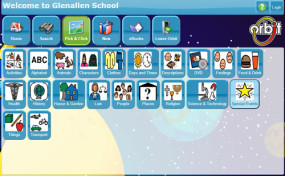
This then gives me a whole lot of categories of animals, I would then click Pets.
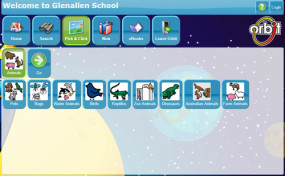
Then Dogs
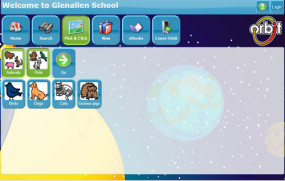
And the whole list of our dog books appear with pictures, easy to understand symbols about whether the book is available, and where in the library it is located.
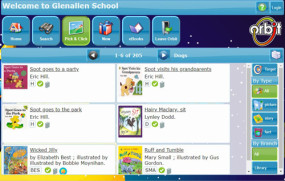
Even better, Oliver is compliant with the Web Accessibility Standards. This means that students can navigate the search using any alternate access methods they need, such as eye gaze or switches.
Watch the video below to see an Orbit search using switches.
Now that our students could find the books they wanted, our next challenge was finding a way for our students to independently read their books. I will be covering this and how we provided access to popular, age equivalent titles in part 2.